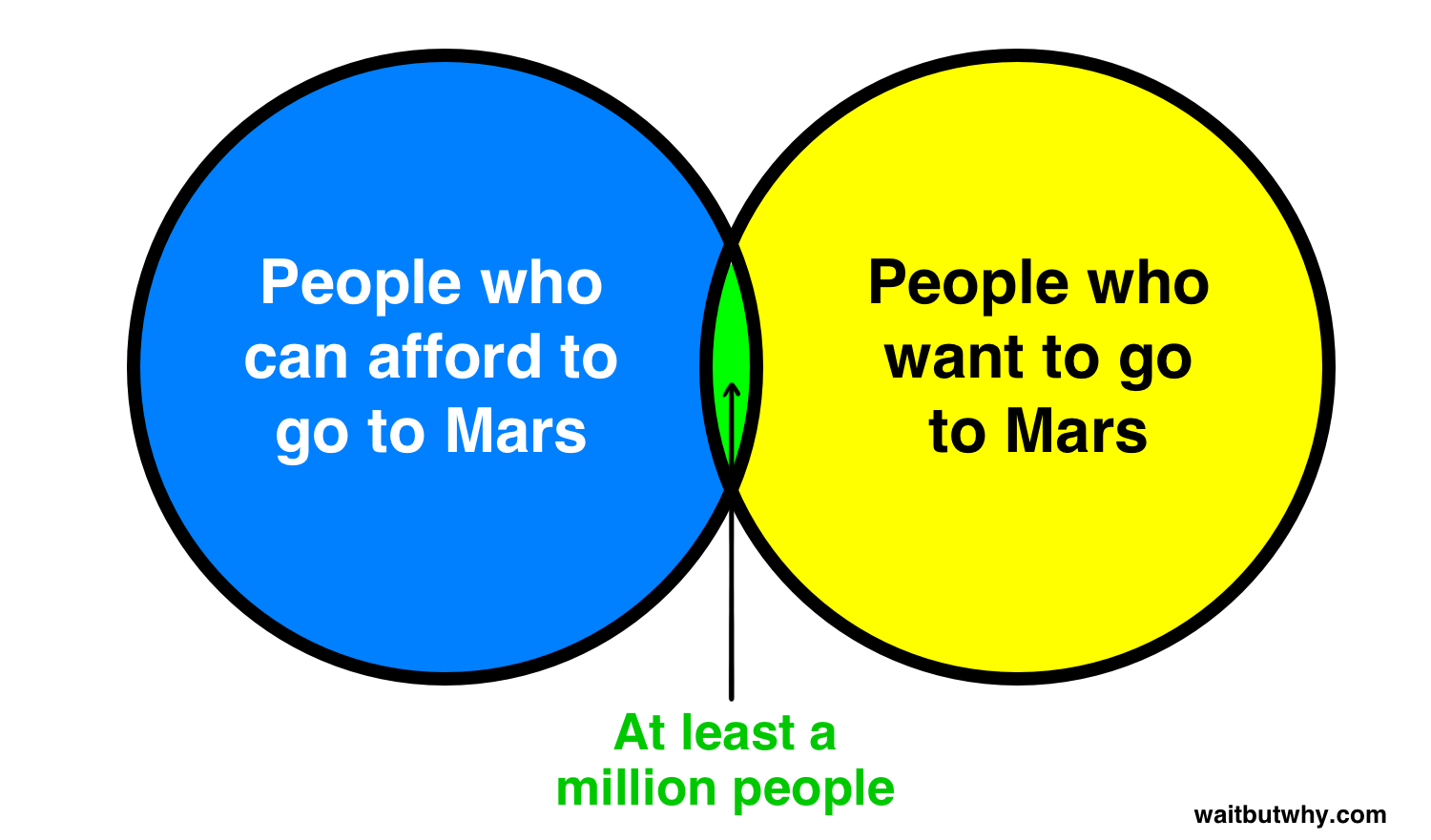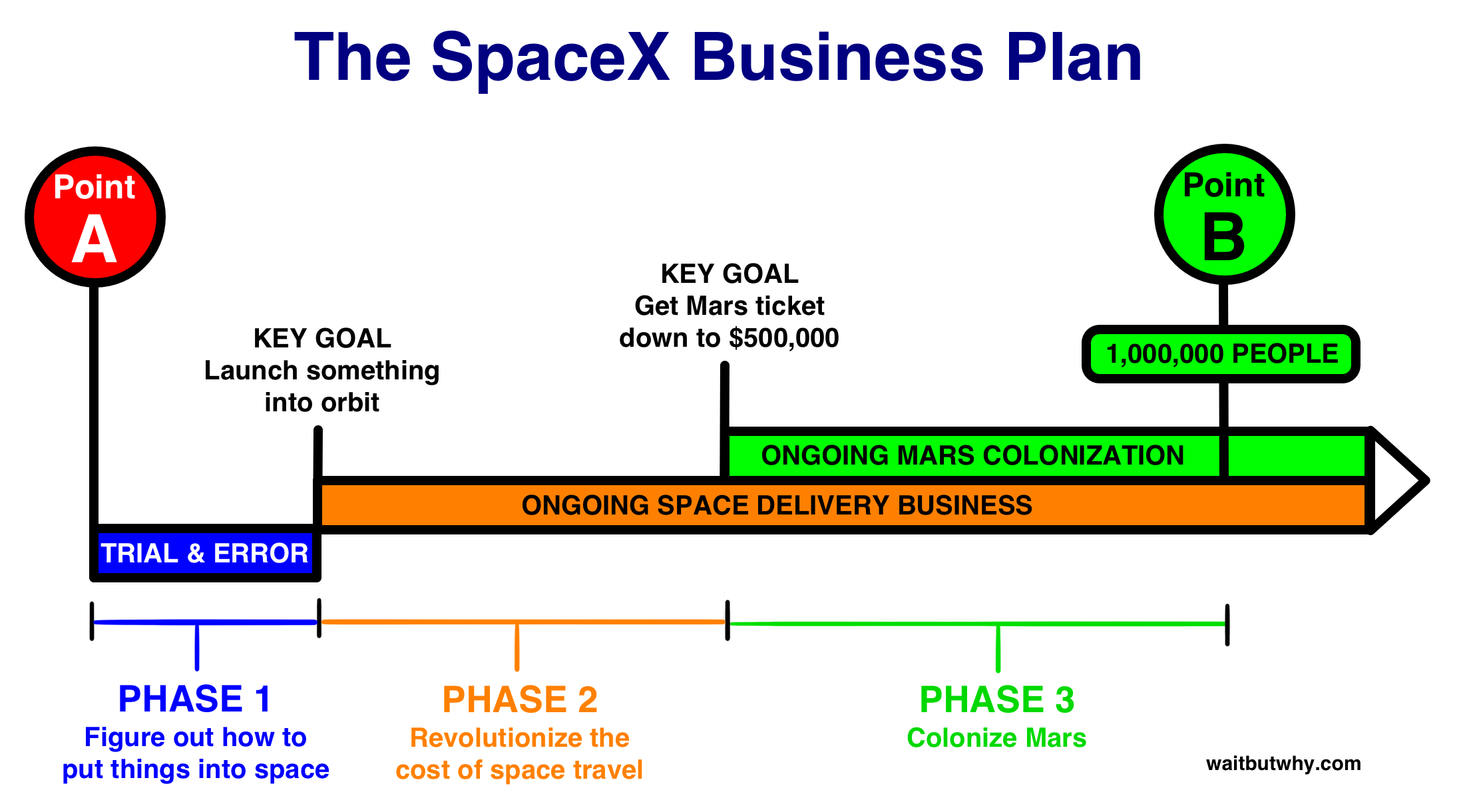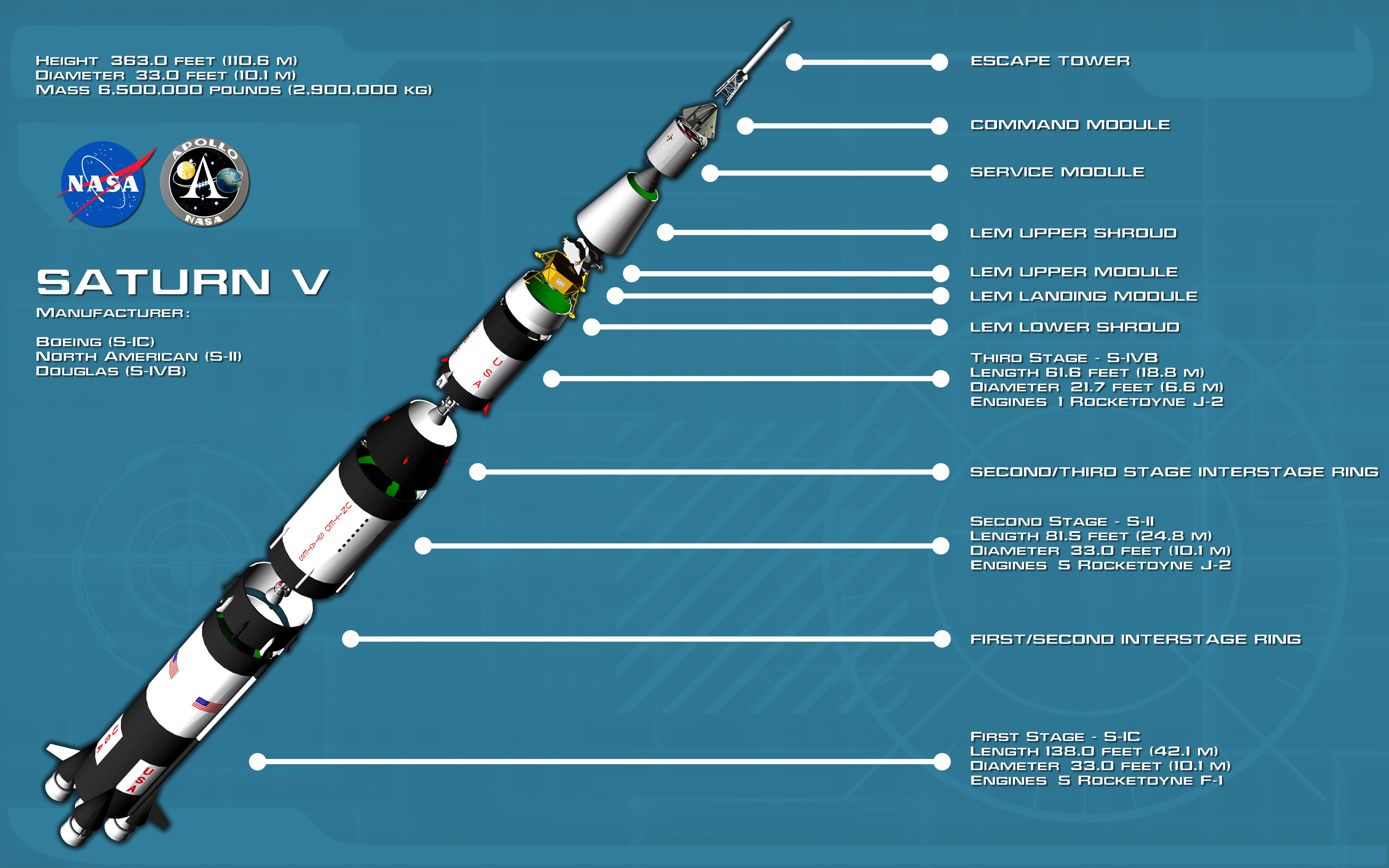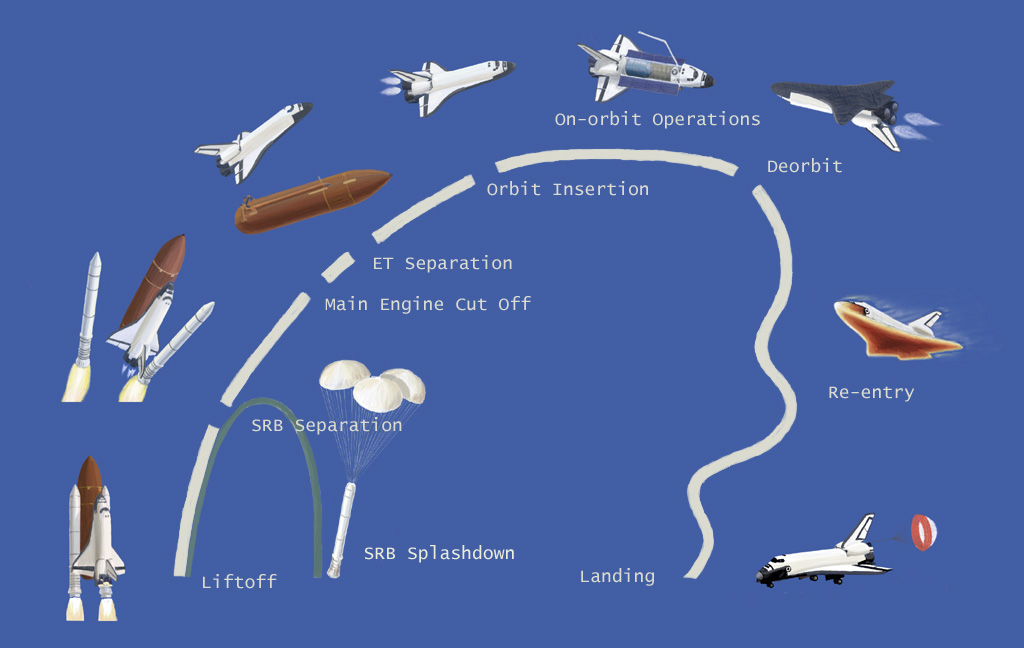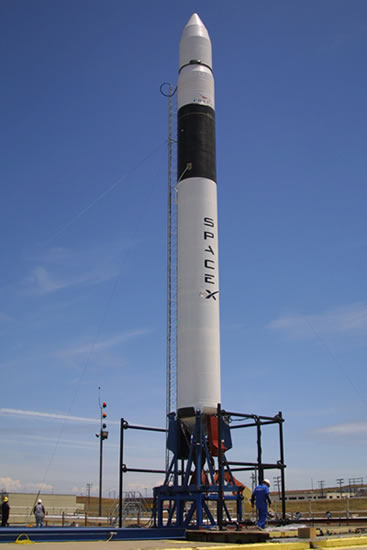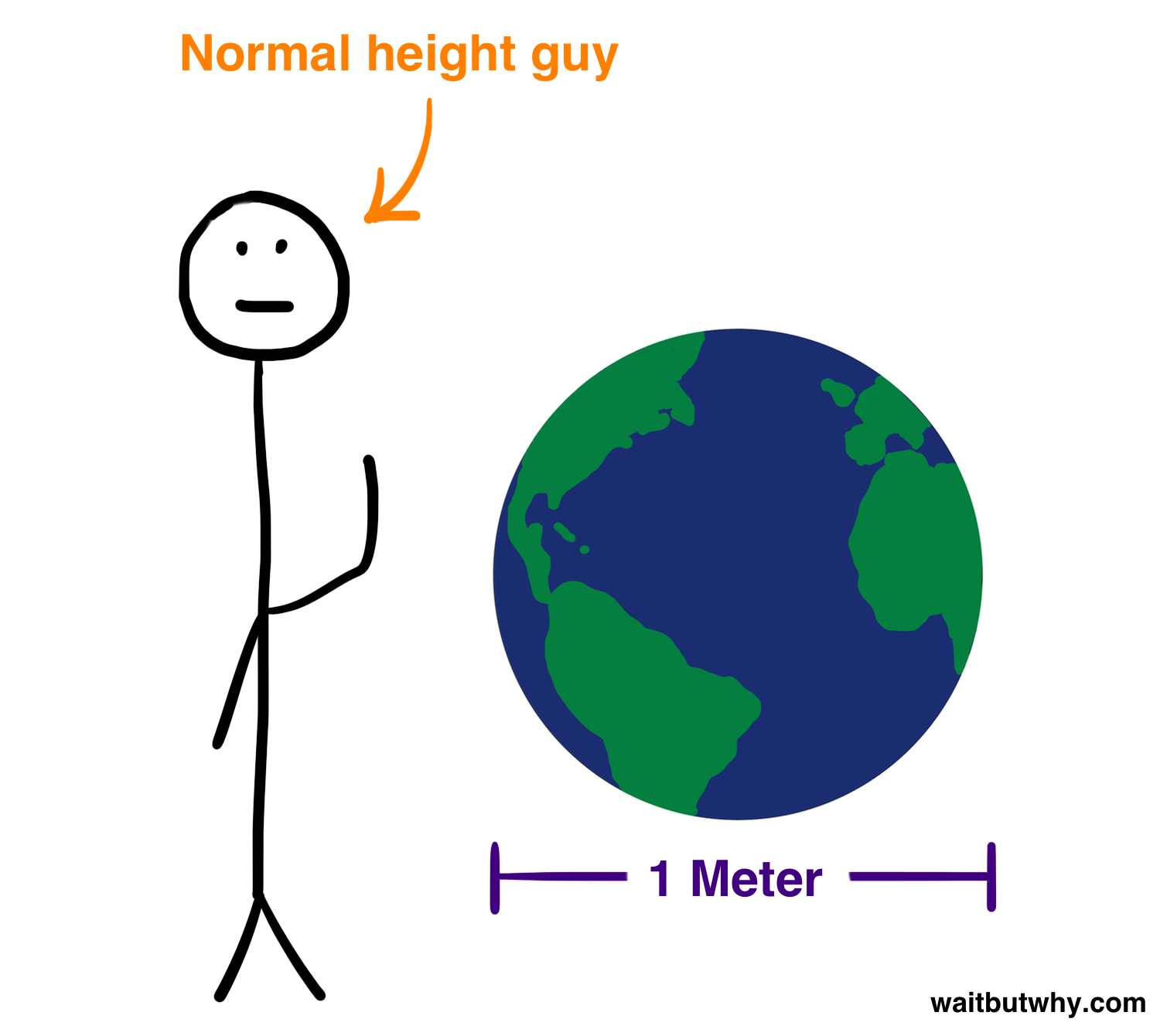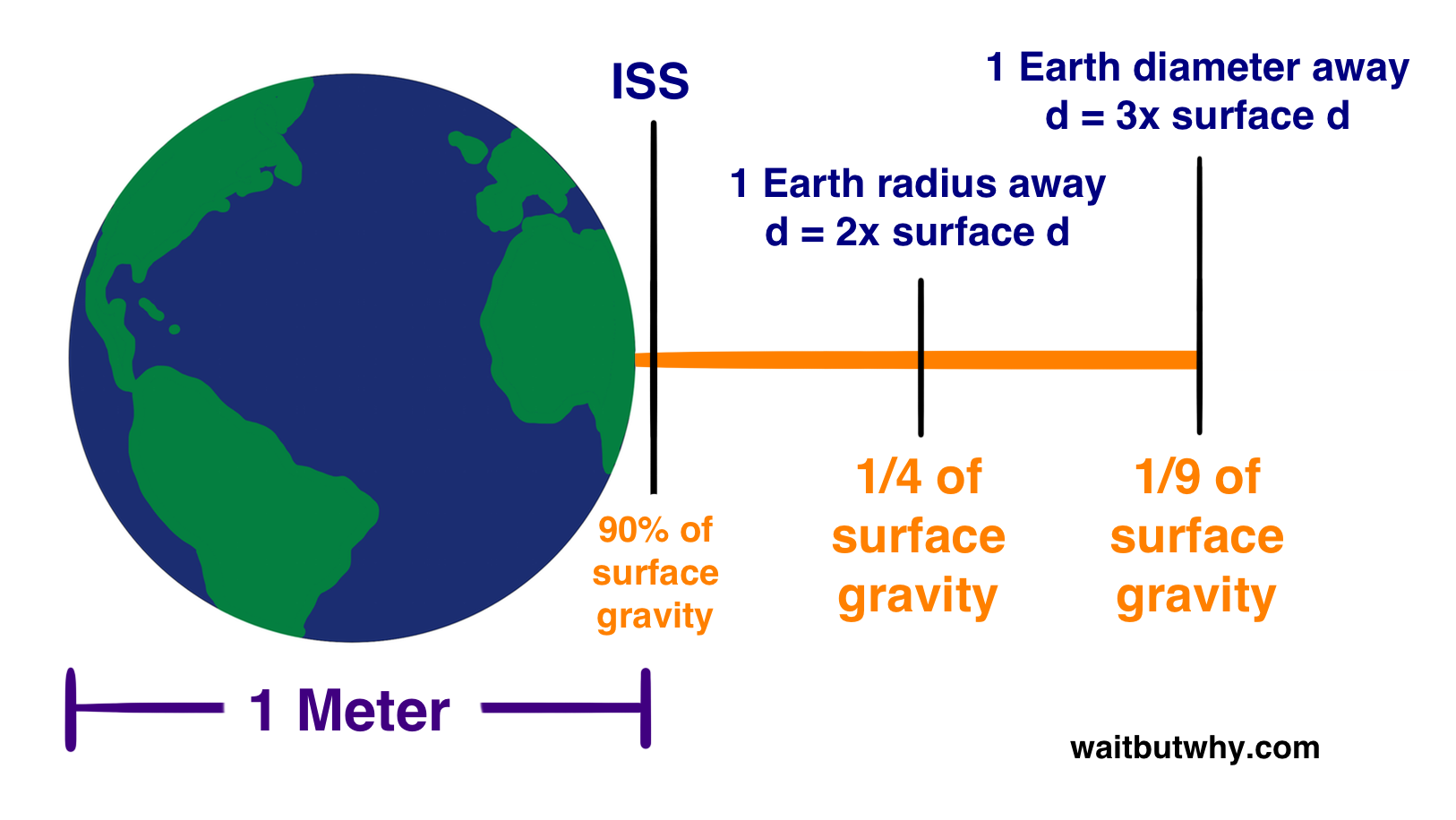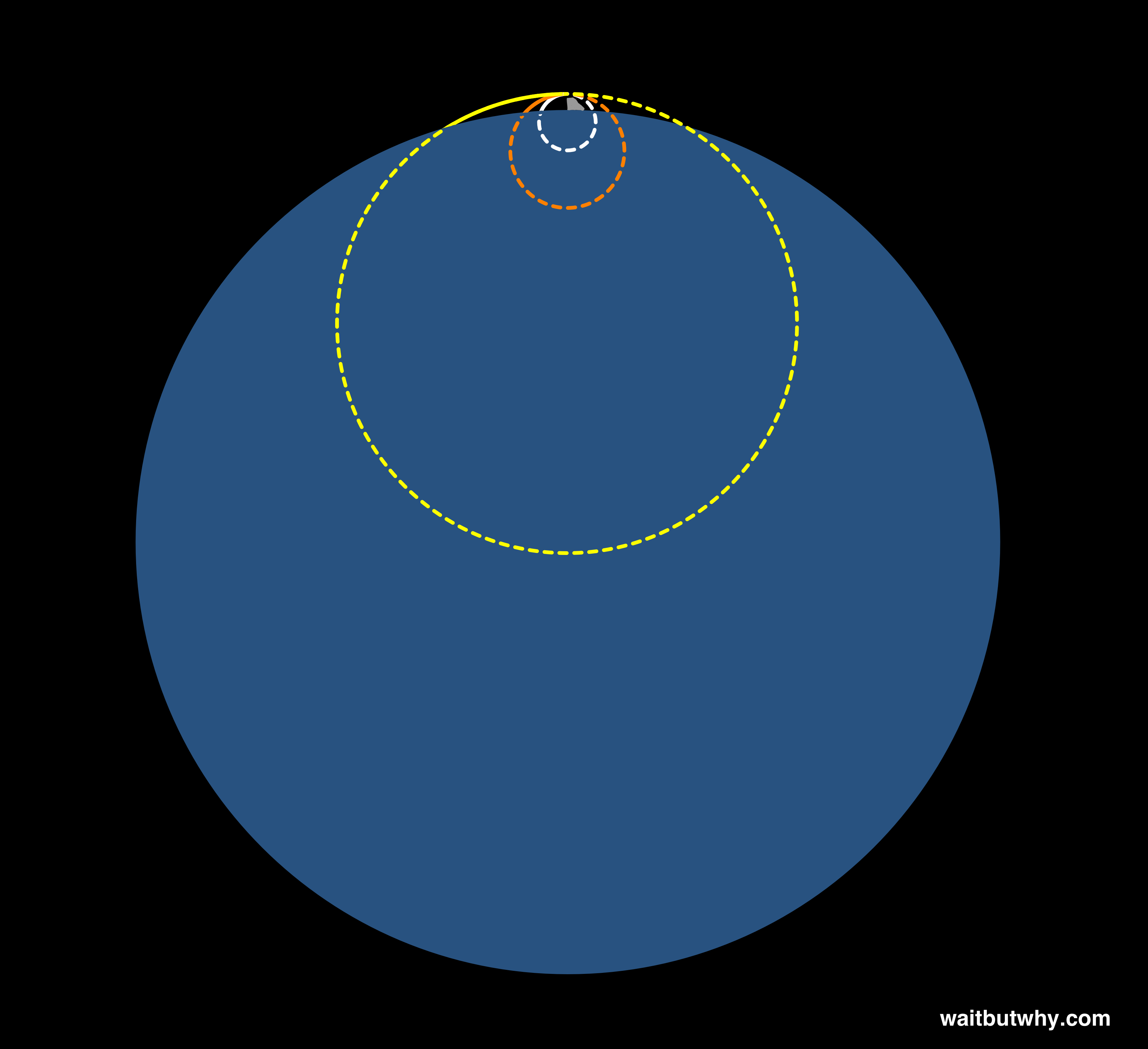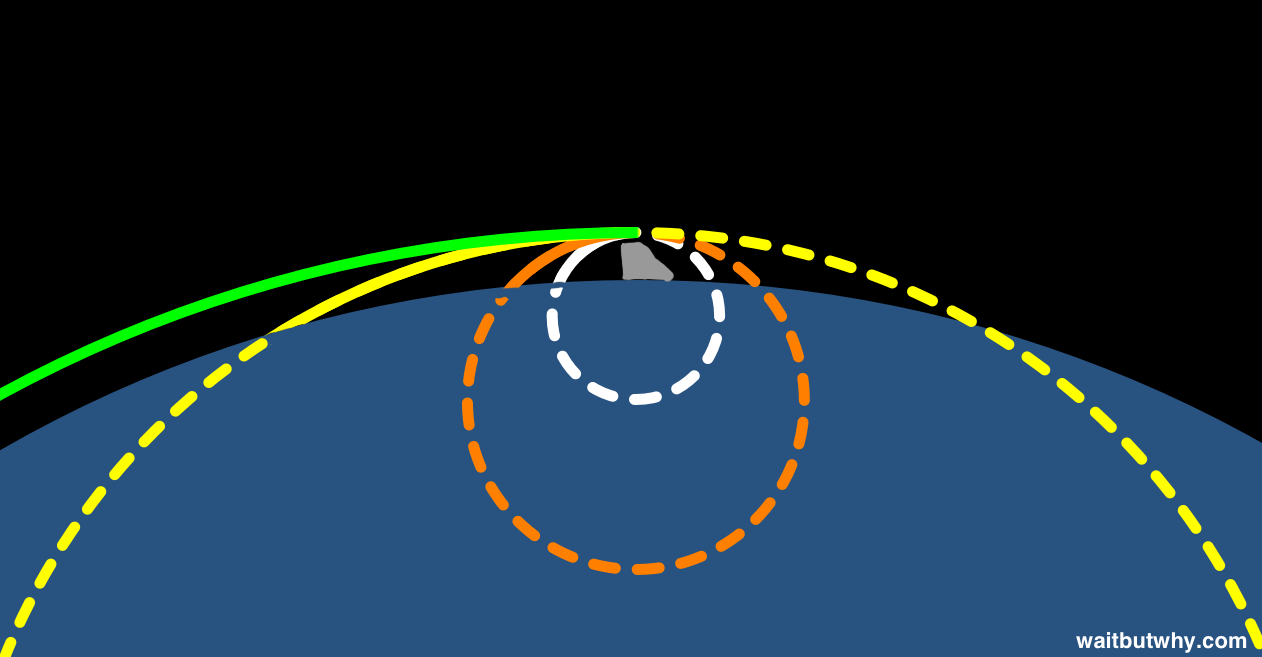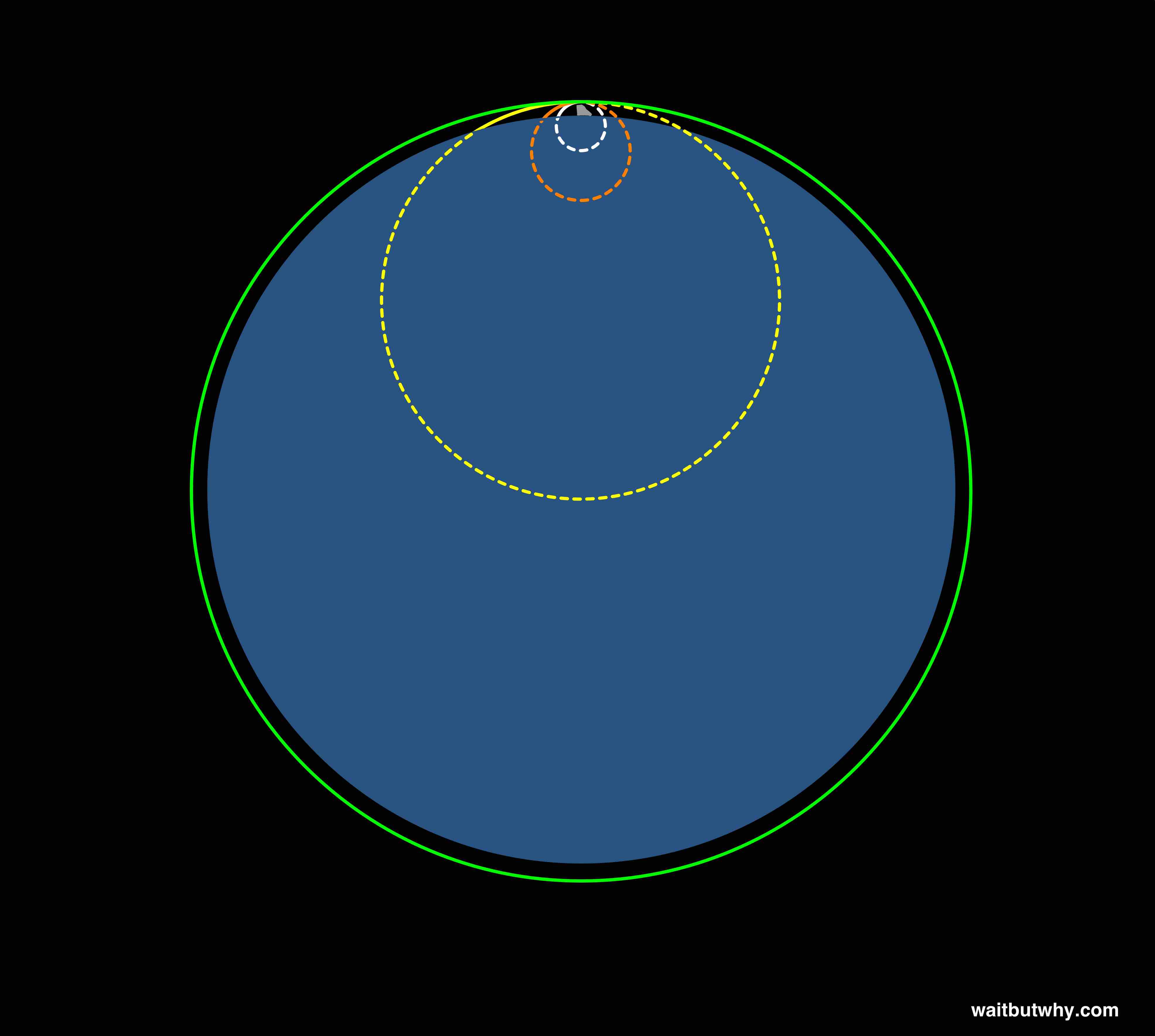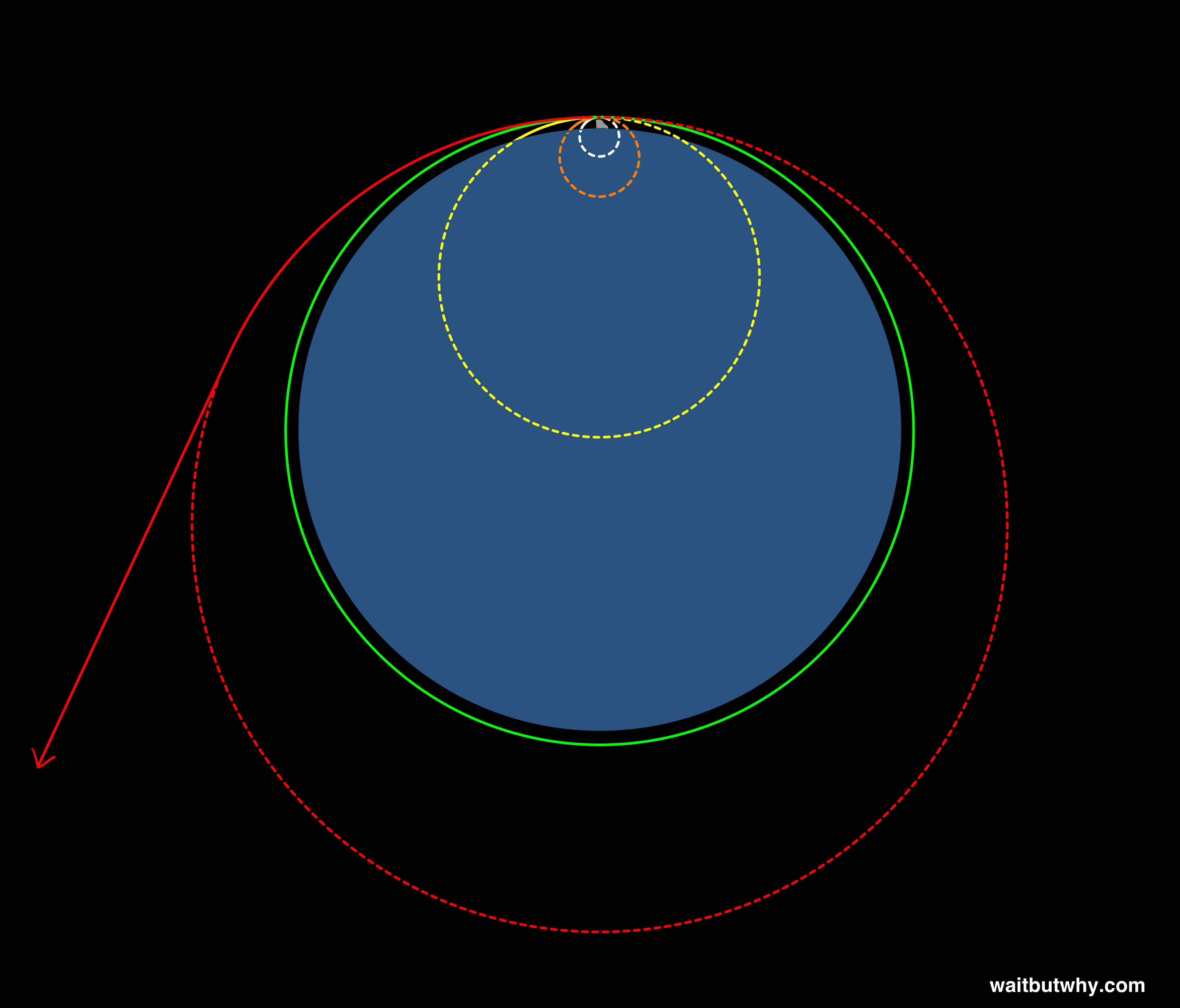There are some tough “going from A to B” situations in life. Going from A) I can’t believe my alarm just went off to B) Now I’m sitting at work. From A) My lease ends next month to B) Now I’m totally moved into a new apartment and all the things are even hung on the walls. From A) Oh shit wait I actually hate my wife to B) Oh good now I have a new wife and everything’s good. These are all tough.
But A) I think I’d like to put 1,000,000 people on Mars to B) Now there are 1,000,000 people on Mars—that one seems extra difficult.
Elon Musk is more ambitious than you.
Since the beginning of this project, I’ve spoken with Musk six times, not that I’m counting, and much of that time was spent talking about how this Mars thing is actually going to happen. From the sound of it, he really just needs two things and then he’ll be all set:
1) A will
2) A way
The conventional wisdom might be that this is a case of, “If there’s a will, there’s a way.” We went to the moon over four decades ago, 15 years before anyone owned a computer, so it seems like Mars could have been perfectly doable by now—the limiting factor must be a lack of will.
But Musk believes it’s the other way around. What we have is a way to go to Mars for an astronomical amount of money. And that’s no way to colonize Mars. To Musk, what’s missing is a way to go to Mars affordably. He calls the United States “a nation of explorers” and “the spirit of human exploration distilled,” and he believes that if going to Mars were much cheaper, plenty of will would arise. But because this isn’t something that’s been remotely possible, no one is talking about it, and whatever will there is in people to go to Mars is totally dormant.
If someone told me that a penthouse apartment in Manhattan with a huge balcony had dropped in price by 95%, I’d have plenty of will to sign a lease and move in. But because the price is what it is, I’m not burning with a desire to move in—I’m not even thinking about it. The reason I’m not writing this post while sitting in a hot tub overlooking the New York skyline isn’t a lack of will, it’s a lack of way.
Musk sees the Mars situation the same way. Rather than “If there’s a will, there’s a way,” he seems to believe it’s more a case of, “If you build it, they will come.”
Specifically, the model Musk has in mind is that “flights” to Mars will be funded by the passengers riding on them, the same way public transportation works on Earth—and the key will be to bring ticket prices down far enough that a million people will buy one. Or as he explained to me, in Musk-speak:
There has to be an intersection of sets of people who wish to go to Mars and people who can afford to go to Mars, and if that intersection of sets equals a number of people necessary to make Mars self-sustaining, that’s the critical solution.
So kinda like:
The problem is, right now it’s more like:
Since Musk thinks the will (the yellow circle) will grow accordingly when there exists a feasible way, Musk identifies the tiny blue circle as the critical limiting factor: the dramatically-too-high cost of space travel. And fixing that, he believes, will be the key link between A and B.
So, in 2002, Musk explored further: “I put together a team, and over a series of Saturdays I had them do a feasibility study about building rockets more efficiently. It became clear that there wasn’t anything to prevent us from doing it. Rocket technology had not materially improved since the ’60s—arguably it had gone backward!”1 He was pumped.
But back to reality for a second. If you decided that revolutionizing the cost of space travel was the key to something very important, you wouldn’t be like, “Great! I’m gonna do it!”, you’d be like, “I don’t know how to do that.” To get our heads around how one might achieve such a thing, let’s imagine that we’re trying to do it and work backwards:
Q: How do I revolutionize the cost of space travel?
A: With decades of innovation, hundreds of trial and error launches, and thousands of super-smart people working on it. Straightforward, but icky. It’s icky because:
Q: Where the hell is the money gonna come from to pay for that? If the government were interested in funding it, they’d have done it themselves already. And no charitable donor is going to put tens of billions of dollars toward funding a massive, 30+ year project that has no guarantee to work.
A: You pay for it by making your research and development operation double as a profitable space delivery service. To test your innovative new technology, you’ll need to do a lot of launches. Governments and companies will pay you a ton of money to take satellites, cargo, and people up to space during those launches. Two birds with one stone.
Q: But how do I know how to launch something into space?
A: You don’t. You have to spend a few years learning how to do it from scratch, and building all of the vehicles yourself, and proving that you can launch successfully before anyone will hire you as a delivery service.
Q: But if there aren’t any customers during the initial learning and development stage, who pays for that stage?
A: You, the founder.
Q: How do I get the money for that?
A: You co-found PayPal and then sell it.
So that’s the logic that Musk thought through back in 2001, and it dictated SpaceX’s business plan:
SpaceX has been at it for 13 years now. Let’s go through what’s happened so far and what still lies ahead.
Phase 1: Figure out how to put things into space
Main Character: Falcon 1
Goal: Launch something into orbit before Musk runs out of money
Phase 1 really started before SpaceX even existed, back in mid-2001 while Musk was still at PayPal. Strongly considering entering the space arena as his next move, Musk did what everyone does when they want to become a world-class rocket scientist in about a year with no schooling—he read some stuff.
He read books like this and this and this and this and basically memorized all of them. Rocket expert Jim Cantrell, who met Musk around that time and was on the failed trip to Russia with him, says “He would quote passages verbatim from these books. He became very conversant in the material.”2
To supplement his reading, Musk asked a lot of questions of a lot of people. Cantrell, who calls Musk “by far the single smartest person that I have ever worked with,” says that Musk “hired as many of my colleagues in the rocket and spacecraft business that were willing to consult with him” and that “it was as if he would suck the experience out of them.”3
As Musk started to talk more and more seriously about making space his next big pursuit, Musk’s friends were worried about him. Wouldn’t you be? Imagine if your friend made a huge amount of money selling an internet business and then told you he was going to spend almost all of it trying to become the first entrepreneur to succeed at building a space launch company—because it was important that human life become multi-planetary. You wouldn’t feel good about this. One of Musk’s friends did his best to talk him out of the insane project by putting together a montage of rockets blowing up and forcing Musk to watch it.
But Musk is an odd duck, and he continued along unfazed.1 After building himself a tree trunk foundation of knowledge, it was time to get other people on board. When I asked Musk about his knowledge of business, he scolded me, explaining, “I don’t know what a business is. All a company is is a bunch of people together to create a product or service. There’s no such thing as a business, just pursuit of a goal—a group of people pursuing a goal.”
So he started assembling a group of the smartest people he could find, and SpaceX was born.
Then the core team of all-stars, which included renowned rocket engineer Tom Mueller, began to hire. Some early SpaceX hiring policies:
No assholes. Musk says that if you hate your colleagues or boss, you won’t want to come to work and stay for long hours.
Hire (and promote) based on raw talent, not experience. Musk has said he doesn’t care that much about a grad degree, college degree, or even a high school degree—just raw talent, personality, and passion for the SpaceX mission. I sat down with SpaceX’s VP of Vehicle Engineering, Mark Juncosa, who I was surprised to learn is a casual California bro. He seemed like some silly dude I’d be friends with, not a leading rocket scientist. He told me he was a terrible student and on his way to being a burnout of a human when he found an affinity for working on race cars2 at the car club where he went to college. Turns out he was a total genius at it, and after school someone introduced him to Musk, who hired him. Juncosa quickly rose up at the company and now, in his early 30s, he’s in charge of one of the major departments of the company, with hundreds of far more experienced people working for him.
There seem to be lots of stories like this that reflect on SpaceX being unusually meritocratic—I met with Zach Dunn, the Senior Director of Launch Engineering, who seemed to be about 12 years old. Dunn told me he started as an intern just a few years ago. Early on, when he assumed Musk had no idea who he was, Musk surprised him by telling Dunn he thought he was a very strong engineer, which made Dunn realize that Musk is acutely aware of everyone at the company. A few years later, Dunn was put in charge of launch engineering and more than 100 employees.
Musk interviews everyone, including janitors, and does so like a weirdo. This rule held with almost no exception through the first eight years of the company’s life, up to the company having 1,000 employees. According to Musk’s biography, “Each employee receives a warning before going to meet with Musk. The interview, he or she is told, could last anywhere from thirty seconds to fifteen minutes. Elon will likely keep on writing e-mails and working during the initial part of the interview and not speak much. Don’t panic. That’s normal. Eventually, he will turn around in his chair to face you. Even then, though, he might not make actual eye contact with you or fully acknowledge your presence. Don’t panic. That’s normal. In due course, he will speak to you.”3
The company itself, like Tesla, is heavily vertically integrated. This means that rather than outsource most of the parts of the rocket-making process to third party suppliers, SpaceX does nearly all of the major pieces itself, maintaining ownership and control over most of the supply chain. This is highly unusual in the aerospace industry—as Ashlee Vance explains, “The factory is a temple devoted to what SpaceX sees as its major weapon in the rocket-building game, in-house manufacturing. SpaceX manufactures between 80 percent and 90 percent of its rockets, engines, electronics, and … designs its own motherboards and circuits, sensors to detect vibrations, flight computers, and solar panels.” Old-fashioned industrialists, like Andrew Carnegie and Henry Ford, were all about vertical integration, as is Apple today in many ways. Most of today’s companies avoid taking on the massive scope vertical integration requires, but for a quality control freak, like Musk or Jobs, it’s the only way they’d have it.
On top of so many parts of the process being merged together under the SpaceX roof, they’re physically enmeshed together in the building, just like at Tesla—engineers on their computers are stationed either out on the floor amidst the design and manufacturing or in all-glass offices with the assembly process visible all around them.
As the team grew and departments formed, Musk remained intimately involved in almost every process in a truly unusual way. Some bosses are called micromanagers—at Musk’s companies, his level of involvement earned him the term “nanomanager.”
Elon Musk Knows a Lot of Shit Blue Box
Almost every person I talked to at both Tesla and SpaceX emphasized how much of an expert Musk is at their particular field, whether that field be car batteries, car design, electric motors, rocket structures, rocket engines, rocket electronics (“avionics”), or aerospace engineering. He can do this because of a combination of his immensely thick tree trunk of fundamental understanding of physics and engineering and his genius-level ability to retain information as he learns it.
It’s that insane breadth of expertise that allows Musk to maintain such an abnormally high level of control over everything that happens at his companies. About SpaceX’s rockets, Musk said, “I know my rocket inside out and backward. I can tell you the heat treating temper of the skin material, where it changes, why we chose that material, the welding technique…down to the gnat’s ass.”4
I asked SpaceX’s VP of Software Engineering, Jinnah Hosein, about Musk’s nanomanagement. He said:
The biggest surprise for anyone first joining the company—SpaceX throws around term “nanomanager,” and you’re like, “Okay he likes to go down in the weeds, that’s cool”—but you have no idea. For the CEO of the company, he has an incredibly deep stack—he has all that info available to him, and he can drill down on any one thing, and often does. He’s making very low-level decisions and very low-level course directions for the company, with high fidelity, and I can’t imagine it working with anyone else at any other company. The thought of one person being a key decision point for so many things is remarkable to me—he can hold it all it in his head and recall it on demand in real time, as necessary, in order to be able to make good decisions.
Okay so now it’s mid-2002, and this crazy idea is starting to become a real thing. There’s a clear mission, a team, and a force-of-nature CEO. Next step—a rocket.
Before we get into SpaceX’s first rocket, let’s get clear on terms:
The point of almost any space launch is to take something to space. The thing you’re taking is called the payload. A payload can be a satellite, cargo, people, a monkey4—anything.
In order to survive the rough trip to space, the payload is sometimes inside a protective shell called a fairing. Other times, the payload needs to be steered, navigated, and docked when it’s out in space and maybe even be brought back to Earth. In that case, the payload is carried inside of a spacecraft or, if you’re nine, a spaceship.
Then you have the rocket. The rocket is the main big thing that launches, and it has one job: to carry the payload and its container up through the atmosphere and put it into space. Most of the rocket is a big fuel tank, and at the bottom of a rocket is one or more insanely powerful, bell-shaped engines. These provide the immense force—or thrust—that it takes to lift many tons of weight up through Earth’s atmosphere. Sometimes a rocket is made up of multiple smaller rockets called stages. Oh, and everything I just described becomes a missile if the payload is a weapon.
Finally, a rocketship is not a thing. A rocketship is a term to make a four-year-old excited about life—that’s it.
The Apollo missions went to the moon using an enormous rocket called the Saturn V. Saturn V weighed 3,000 tons—about as much as seven Boeing 747s—and was the height of a 35-story building.5
Saturn V was like one of those satisfying Russian doll sets where it keeps getting smaller and smaller. Here are all the pieces:6
The Space Shuttle, with a much simpler job of only ever going into Low Earth Orbit, took a totally different approach.
Instead of one big first stage rocket, the Space Shuttle used two rockets (called solid rocket boosters)5 to do the meat of the heavy part of the ascent, and the payload—people and equipment—rode in the shuttle spacecraft, which they really made look like a stereotypical spaceship. The spacecraft provided the rest of the boost after the rockets dropped away, using fuel from the big, for-some-reason-orange fuel tank. Normally, returning spacecraft6 land in the ocean using parachutes, but the Space Shuttle took a more civilized approach, landing on a runway like an airplane:7
When SpaceX made their first rocket, they weren’t trying to do the biggest, baddest thing that had ever been done. Instead, they built what was kind of their training-wheels rocket, a small, straightforward rocket Musk named Falcon 1 (after the Millennium Falcon in Star Wars). It was a 70-foot-tall (21 m), two-stage rocket with one super-powerful engine at the bottom—SpaceX’s own invention, the Merlin engine.8
Despite its modest size and capability, Falcon 1 was full of innovative new technology. The primary goal was to make it cheaper than ever before to take small payloads into space—not just because Musk sees cost-reduction as the way to get us to Mars, but because he sees it as the only aspect of space travel that currently can be improved in a meaningful way. He says, “Speed for a rocket is always going to be roughly the same. The convenience and comfort is going to be about the same. Reliability…there’s not going to be much improvement there. So you’re really left with one key parameter against which technology improvements must be judged, and that’s cost.”
Musk cites two reasons costs have remained so high:
1) The only companies in aerospace are huge, and huge companies are risk averse. He says, “There’s a tremendous bias against taking risks. Everyone is trying to optimize their ass-covering … Even if better technology is available, they’re still using legacy components, often ones that were developed in the 1960s … [many] use Russian rocket engines that were made in the ’60s. I don’t mean their design is from the ’60s—I mean they start with engines that were literally made in the ’60s and, like, packed away in Siberia somewhere.”
2) Not enough vertical integration. We mentioned SpaceX’s vertical integration and the full control it affords Musk over what happens at SpaceX, but Musk also believes the vertical structure is critical to keeping costs down, and he criticizes the rest of the industry for not doing so: “There’s this tendency of big aerospace companies to outsource everything … They outsource to subcontractors, and then the subcontractors outsource to sub-subcontractors, and so on. You have to go four or five layers down to find somebody actually doing something useful—actually cutting metal, shaping atoms. Every level above that tacks on profit—it’s overhead to the fifth power.”9
Without the baggage of a huge company with a long history, SpaceX was able to “design and develop [Falcon 1] from the ground up from a blank sheet of paper,” says Max Vozoff, an early SpaceX employee,10 and you can see the “blank sheet of paper” mindset in Musk’s ground-up reasoning: “[I asked], What is a rocket made of? Aerospace-grade aluminum alloys, plus some titanium, copper, and carbon fiber. And then I asked, what is the value of those materials on the commodity market? It turned out that the materials cost of a rocket was around 2 percent of the typical price—which is a crazy ratio for a large mechanical product…So, I thought, we should be able to make a much cheaper rocket given those materials costs.”11
And that’s all great—but this was not a normal company with a normal budget and timeframe for development. This was a venture few sane investors would touch, and the ability for the company to exist rode largely on Elon Musk’s personal bank account. By the time 2006 rolled around, Musk had decided to revolutionize the automotive industry as a side project, and with $70 million of his PayPal fortune tied up in Tesla, that left about $100 million for SpaceX. Musk said this would be enough for “three or four launches.” SpaceX would have that many tries to prove it was worthy of paying customers. And since the thing paying customers would want is for SpaceX to deliver a payload of theirs into orbit, that’s what SpaceX needed to do—successfully launch something into orbit to show the world that they were for real.
So the game was simple—launch a payload into orbit in three or possibly four tries, or the company was done. At the time, of the many private companies who had tried to put something into orbit (see the dearth of “operational” companies on this list), only one had ever succeeded (Orbital Sciences).
To understand why this is such a hard thing to do, we have to understand what an orbit is.
What is an orbit?
It’s intuitive to think that the challenge of putting an object in orbit is the difficulty of getting it up to orbit, just like it’s intuitive to think that the astronauts in the ISS are floating around because there’s no gravity up in space where they are. This is a good time to stop trusting your intuition.
Let’s zip back to high school for a second. Here’s the equation we use to figure out the force of gravity:
G is the gravitational constant, a super-icky number we can ignore for this exercise.
m1 and m2 are the masses of the two objects. There are two objects because gravity isn’t a one-way thing—every two objects attract each other with an equal force. In the case of you and the Earth, what you think of as your weight is the force of gravity between you and the Earth, a force acting equally on you and the planet.7 And because the two mass numbers are in the numerator, it means that when they go up, the force of gravity will go up too (proportional to their product). So if I doubled your mass, your weight would double. If I left your mass the same but doubled the Earth’s mass—again, your weight would double. If I doubled both your and the Earth’s mass—your weight would quadruple. For our purposes in this post, we don’t need to work with mass.
What we care about is the d2 part. d is the distance between the two objects—or more specifically, the distance between the centers of mass of the two objects. In the case of the Earth, the mass is symmetrically distributed, so the center of mass is the center of the planet. The Earth’s radius is 3,959 miles (6,371 km), so when you’re on the surface of the Earth, that’s the number you use for d to determine the force of gravity you’re experiencing. Because d is in the denominator of the equation, as d grows, the force of gravity decreases.
To illustrate all this, I’m going to shrink the Earth down to about one 13-millionth of its size, so that it’s exactly one meter in diameter:
If we double d by moving an Earth radius away from the surface (half a meter), d2 goes up by 4x, so the force of gravity, and your weight, would be a quarter of what they are on the surface. If you moved to a full meter away—where you could fit a full Earth between you and the Earth—d has now tripled and your gravity is 1/9 of what it is on Earth.8
And where does the ISS fall in all of this?
It’s between 205 and 255 miles away, which on our meter globe is about 2-3 cm, or a little over an inch from the surface. If a ping pong ball were stuck to the globe, the ISS (and a lot of satellites) would run into it. (While we’re here, the commonly-recognized altitude where “space” starts is the Kármán line, 62 mi (100 km) up, which on our globe starts 7.8 mm above the surface—about the width of a pencil. And an airplane flies at .84 mm off the surface, about the height of a grain of sand.)
So what does that mean about gravity in Low Earth Orbit, in a place like the ISS?
Well if we take the mid-point of the average altitude of the ISS (230 mi), we find that being at that height adds only 5.8% to the normal d on Earth’s surface, which only brings surface gravity down by about 10%.
So ISS astronauts should barely feel the gravity difference. And yet, they’re floating.
The reason is they’re in free fall.
I once had a chance to fly in a little plane with a pilot who didn’t give a shit, so he brought the plane up to 4,000 feet and then quickly dropped to 2,000 feet. Before the drop, he handed me a pen and told me to rest it on my open palm. During the drop, the 8% of me not in bed-shitting survival mode saw the pen hover in front of me and gently float over to the side before abruptly dropping into my lap when we leveled off again at 2,000 feet. This is what’s happening inside the ISS at all times.
Here’s why: picture you’re standing on a cliff on a planet smaller and smoother than the Earth and with no atmosphere—and you throw a baseball as hard as you can.
It would go something like this:
Now what if a major league pitcher gave it a try. It might look like this:
And what if you fired the ball out of a cannon? It would go even further.
Before each of these balls hits the ground, they fly in a curved path. If the planet’s surface didn’t get in the way, those paths would continue as long ellipses. To keep things simple, let’s just match each path up with a circle whose curve lines up with it ball’s trajectory pretty well:
Now let’s get a much more powerful cannon, and it does this:
Seems normal, but notice that the arc’s curve is matching the shape of the planet. So what ends up happening is this:
The ball would circle the planet and run into the back of the cannon. And if nothing were there to block it, the ball would continue “falling” forever, never able to land. Because the ball’s path’s curve, and corresponding circle, match up exactly with the curvature of the planet, the planet keeps falling away from the ball as the ball tries to fall down to the ground. You’ve put the ball in orbit.
If you had a perfectly smooth planet of any size, and it had no atmosphere at all, you could in theory put something into orbit right above the ground. But because the Earth has a thick atmosphere (and an uneven surface with mountains), no matter how hard you fired a ball near the surface, the atmosphere would slow it down, making its path’s curvature tighter and tighter until it fell out of orbit and hit the ground. That’s why everything we put in orbit is high up, where the atmosphere is so thin it doesn’t slow the object down. And without any force of friction to interfere, Newton’s Law of Inertia kicks in and it’ll circle the planet forever.9
In order to fall into orbit around the Earth, an object has to be moving unbelievably fast. But not too fast. Why? Because then the curve is too broad, the corresponding circle is bigger than the planet, and this happens:
That’s why people talk about something reaching “orbital velocity” to stay in orbit, and “escape velocity” to escape from the Earth’s gravity well and head out into space. Escape velocity just means the arc the path makes is broader than the curvature of the planet.
So what’s orbital velocity at about a 230 mi altitude where the ISS is? 17,150 mph (27,600 km/h). Or 4.76 mi / 7.66 km per second. That’s the goldilocks speed that will keep an object in orbit at that height.
To get a feel for how fast that is, if you threw a ball at that speed from the beach into the ocean, it would zing out and over the horizon, out of sight, in about a half a second. At that speed, the ISS circles the Earth every 90 minutes (and yet, because velocity is relative, the astronauts in the ISS don’t feel like they’re moving at all, the same way you don’t on an airplane).
Back to SpaceX. Given the blue box above, it makes sense that SpaceX’s challenge was to essentially “throw” a payload up into orbit. People think a rocket launch goes up, but really it’s throwing something really hard sideways, which is why a rocket’s trajectory looks like this:12
It’s like our examples above, and the rocket is acting like the hand of a giant who’s throwing the payload:
Except in the real world, instead of an arm and a hand, a rocket company has to throw the payload with a seven-story high, 40-ton10 metal tower that explodes away from the Earth, and it’ll need to ping a delicate machine out at just the right altitude, at just the right speed.
To make things even harder, the “throw” starts off in the sea-level atmosphere, which is both molasses-thick and full of moving parts (i.e. weather). It’s like trying to throw a ball with precision with your hand starting under a few feet of flowing water. SpaceX’s head of vehicle engineering, Mark Juncosa, described the challenge of guiding a rocket up through the atmosphere: “The rocket is like a wet noodle and you’re trying to push it to space. It’s flopping around like hell. You can’t even figure out where it’s going by measuring the trajectory of any one point on the rocket—you have to measure a few points.”
And with such large forces in play—the weight of the rocket, the speeds, the thick atmosphere—even a tiny equipment malfunction can immediately destroy the mission. The problem is, you can’t reliably test exactly how the equipment will hold up until it actually launches.
SpaceX learned all of this the hard way.
2006: First launch—failure
2007: Second launch—failure
2008: Third launch—failure
Bad times.
The failures were caused by tiny things. Specifically, a corroded nut not holding up under the pressure, liquid in the rocket sloshing around more than expected, and the first stage engines shutting down a few seconds too late during stage separation. You can get everything 99.9% right, and the last .1% will explode the rocket in a catastrophic failure. Space is hard.
Every rocket-launching government or company—each and every one—has failures. It’s part of the gig. Normally, you take a deep breath, roll up your sleeves, figure out what went wrong, and move on to the next launch. But SpaceX had special circumstances—the company had money for “three or four launches,” and after three failures, the only launch they had left was the Or Four one. It was scheduled for less than two months after the third launch failed. And this was the last chance.
A friend of Musk, Adeo Ressi, describes it like this: “Everything hinged on that launch … If it works, epic success. If it fails — if one thing goes differently and it fails — epic failure. No in between. No partial credit. He’d had three failures already. It would have been over. We’re talking Harvard Business School case study — rich guy who goes into the rocket business and loses it all.”1311
But on September 28, 2008, SpaceX set off the fourth launch—and nailed it.12 They put a dummy payload into orbit without a hitch, becoming only the second privately-funded company ever to do so.
Falcon 1 was also the most cost-efficient rocket ever to launch—priced at $7.9 million, it cost less than a third of the best US alternative at the time.
NASA took notice. The successful fourth launch was enough evidence for them that SpaceX was worth trusting, and at the end of 2008, NASA called Musk and told him they wanted to offer SpaceX a $1.6 billion contract to make 12 deliveries for them to the ISS.
Musk’s money had done its job. SpaceX had customers now and a long future ahead.
Phase 2: Revolutionize the cost of space travel →
So silly of the word unfazed to be spelled that way.↩
Spell check is telling me that racecar isn’t one word. But then why is it such a famous palindrome example?↩
The bio also describes a riddle Musk asks every engineer during the interview: “You’re standing on the surface of the Earth. You walk one mile south, one mile west, and one mile north. You end up exactly where you started. Where are you?” One answer to that is the North Pole, and most of the engineers get it right away. That’s when Musk will follow with “Where else could you be?” The other answer is somewhere close to the South Pole where, if you walk one mile south, the circumference of the Earth becomes one mile. Fewer engineers get this answer, and Musk will happily walk them through that riddle and others and cite any relevant equations during his explanations. He tends to care less about whether or not the person gets the answer than about how they describe the problem and their approach to solving it.” I posed this question on the WBW Facebook page, and a few people pointed out that there are actually an infinite number of answers—because in the South Pole situation, the latitude circle you walk down to, in addition to working if it’s exactly a one mile circumference, will also do the trick if it’s 1/2, 1/3, 1/4 of a mile, etc. You’ll walk around more than once but end up in the exact same place. Now that I’ve thought this problem through and have perfect, detailed answer to it in my head, while writing this, I started fantasizing about being interviewed by Musk so I could act like I was hearing it for the first time, pretend to think hard for three seconds and then say, “There are an infinite number of answers” and explain why all confidently.↩
In 2014, SpaceX launched 20 mice into space and sent them to the ISS to participate in a series of experiments there. I thoroughly enjoy the image of the mice in their little container suddenly becoming weightless and flailing their little mice limbs around trying to figure out where the ground went. Also, Musk referred to them as mousetronauts. Pleased about all of this.↩
The “solid” part refers to the fact that the fuel is in a solid state, not liquid. The big downside of this is that once you ignite one, there’s nothing you can do to stop it. SpaceX rockets, like the Saturn V, use liquid fuel, so they can be turned on and off—but liquid also usually means more things can go wrong. I debated skipping this footnote, because you don’t really care about what I just explained to you. But now here we are.↩
The plural of spacecraft is spacecraft. One of those words.↩
In case you’re rusty: we use the terms “weight” and “mass” interchangeably in our lives, but they’re totally different concepts. Mass is how much stuff is in you—it’s the mass of all of your atoms added together. This is your mass no matter where you are in the universe. Weight is the downward force you’re exerting, due to the force of Earth’s gravity. If you were on the moon, where the force of gravity is about 1/6 of what it is on the Earth, your mass wouldn’t change, but you would weigh 1/6 as much as you do on Earth. Kilograms are a unit of mass, while pounds are a unit of force (weight). The unit of weight in the metric system is the Newton, and the unit of mass in the Imperial system is the slug. Ugh. The Imperial system is so embarrassing.↩
At the moon’s distance from the Earth, gravity from Earth is 1/3,758th of what it is on the Earth’s surface, but the moon is about 1021 times as massive as a person, so the force of gravity between the Earth and moon is still over 100 quadrillion times greater than the force on you right now. The reason the moon’s gravity is strong enough to move our oceans around, creating tides, is because both the moon and the ocean are pretty massive, so their m1m2 product gives the gravitational force between them some muscle. The moon’s force that moves oceans doesn’t fling small ponds up in the air because the pond’s much smaller mass brings the force down proportionally.↩
In the case of objects orbiting the Earth, there is some small drag because it’s not a perfect vacuum that close to the Earth, so objects do eventually fall out of orbit.↩
I’m about to use the unit “ton” a lot. I like tons because A) with massive objects, a number like 70 tons is easier for me to wrap my head around than 140,000 pounds, and B) it saves me from having to do the lb/kg thing. A ton (Imperial system) and a tonne (metric system) are very similar measurements, so the whole world has the same general conception of what the word “ton” means. I’m going to use the Imperial ton, which is 2,000 pounds (907 kg). A ton is about 90% of a metric tonne (which is 1,000 kg). A good way to think about tons is that a car is about two tons. So when you hear that something is 20 tons, picturing 10 cars in a stack is a nice way to grasp the amount of weight.↩
At least Tesla wasn’t going under at this exact same time. Oh wait.↩
The only difference between the horribly disappointing third launch and the wildly successful fourth launch was that in the fourth launch, the stage separation went smoothly, while in the third one, the first stage engine stayed on a few seconds too long and it head-butted the second stage in the ass before falling away, screwing up everything—I cued up the two launch videos to the exact point of stage separation: third launch, fourth launch (you can hear how elated the SpaceX employees are after the successful separation in the second video).↩
http://www.businessinsider.com/how-elon-musk-learned-rocket-science-for-spacex-2014-10#ixzz3gvgY0l60↩
http://www.quora.com/How-did-Elon-Musk-learn-enough-about-rockets-to-run-SpaceX↩
Image: http://abyss.uoregon.edu/~js/space/lectures/lec14.html↩
Image: Wikipedia Commons↩
Image: http://www.defenseindustrydaily.com/falcon1-rocket-fails-after-launch-02069/↩
Image: https://www.flickr.com/photos/spacexphotos/16510243060/↩
http://www.esquire.com/news-politics/a16681/elon-musk-interview-1212/↩
